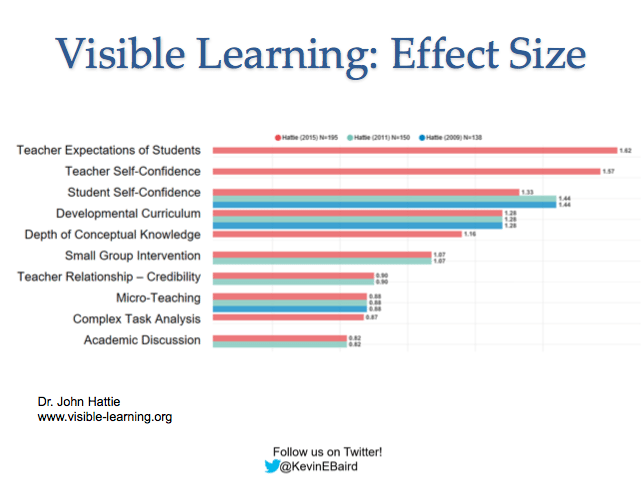The Top Five Priority Practices for the Classroom

Educators must start with the end goal in mind: college and career readiness. To get there, students must be able to read independently and proficiently at a certain level, and fluently apply math foundations. There are five impactful elements that teachers can make sure to incorporate in the classroom to help students get to where they need to be. The highest-ranking element, teachers’ expectations of students, can have the greatest effect on student performance.

The next two important elements, teacher self-confidence and student self-confidence, correlate with each other. By providing students with the tools they need to collaborate, engage, and succeed, teachers will feel successful themselves. “Show me a classroom where the kids are doing great, and I’ll show you a teacher who is motivated and excited to come to school…success breeds success,” said Kevin. Both student and teacher confidence builds upon success.

Last, and related to a developmental curriculum, it is important to have expectations of your students that are related to their conceptual knowledge. They can understand the ideas of the material without necessarily having read the hardest content. Students can think at high levels about deep concepts within a text, even though the text may be at a lower reading level. “These top five things…are mostly about a relationship with a student,” said Kevin. By showing students that they care with these priority practices, both teachers and students can have success.
This broadcast was hosted by edWeb.net and sponsored by The Center for College & Career Readiness.
This article was modified and published by eSchool News.
About the Presenter
Kevin Baird, Chairman of the Board of the Center for College and Career Readiness, is a co-author of the Pathway for College & Career Standards Implementation. For more than 20 years he has served schools, districts, state and national education offices as an expert in the use of technology to achieve college and career ready outcomes along with implementation of change models to drive sustainable, enhanced learning outcomes.
Kevin is the creator of the Common Core Black Belt Certification Graduate Program accredited by the University of Southern California, Rossier School of Education, and serves as graduate faculty for numerous blended learning courses for school administrators. He has participated in educational research on every continent except Antarctica. Kevin is a frequent keynote speaker and consultant working with some of the largest districts in the United States and with governments around the world. Follow him on Twitter @KevinEBaird.
Join the Community
College and Career Readiness is a free professional learning community (PLC) where educators can receive and share information on how to prepare students for college and careers.
About the Sponsor





Comments are closed.